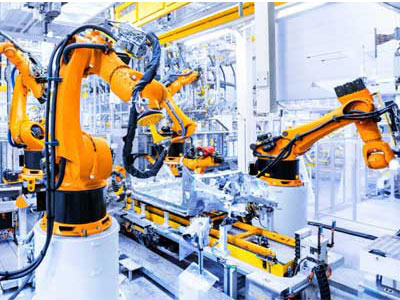Key Takeaway
Industrial robots, while efficient, come with several risks. One major risk is worker safety. Robots can cause injuries if they malfunction or if workers are too close during operation. Another risk is cybersecurity. Connected robots can be targets for cyber-attacks, potentially disrupting operations. Additionally, there are financial risks. Implementing and maintaining robots can be costly. Lastly, there’s the risk of job displacement. Robots can replace certain manual jobs, impacting employment. Proper safety measures, cybersecurity protocols, and strategic planning can mitigate these risks.
Operational Risks
Operational risks in any business encompass threats arising from internal processes, systems, and external factors. These risks can affect efficiency, financial stability, and reputation. Mitigating operational risks involves identifying potential disruptions and implementing robust strategies to safeguard against them. From supply chain vulnerabilities to regulatory changes, addressing these challenges proactively ensures sustainable operations and enhances resilience in dynamic business environments. Understanding and managing operational risks are crucial for maintaining continuity and achieving long-term success in today’s competitive landscape.

Safety Risks
When dealing with industrial robots, safety risks are a paramount concern. These machines, if not properly managed, can cause severe injuries. Imagine a scenario where a malfunctioning robot suddenly moves, posing a serious threat to nearby workers. Even during routine operations, if safety protocols are ignored, the risks remain significant. To mitigate these dangers, implementing strict safety measures such as emergency stop buttons and safety barriers is crucial. Additionally, ensuring that workers are well-trained on how to interact properly with robots can prevent accidents. Prioritizing safety not only protects employees but also fosters a safer working environment.
Moreover, maintaining a culture of safety requires continuous effort. Regular safety audits, updating safety protocols, and staying informed about the latest safety technologies are essential practices. Workers should be encouraged to report potential hazards and participate in safety training sessions. By embedding safety into the company’s ethos, the risk of accidents can be significantly reduced. This proactive approach to safety helps ensure that industrial robots enhance productivity without compromising worker well-being. Companies that prioritize safety are better positioned to avoid costly incidents and maintain a positive reputation in the industry.
Technical Failures
Technical failures in industrial robots can disrupt production and incur significant costs. These failures often arise from software bugs, hardware malfunctions, or network issues. For instance, a robot might experience a sensor failure, leading to inaccurate movements and potential damage to products or equipment. Additionally, software glitches can cause unpredictable behavior, severely affecting productivity. Regular diagnostics and updates are essential to prevent such issues. Employing a robust maintenance schedule and having a quick-response team for technical support can minimize downtime and ensure smooth operations.
To further mitigate technical risks, companies should invest in high-quality components and reliable software systems. Predictive maintenance technologies can identify potential failures before they occur, allowing for timely interventions. Training staff to handle minor technical issues can also reduce the impact of unexpected failures. By focusing on prevention and preparedness, companies can maintain production efficiency and minimize the financial impact of technical failures. A proactive approach to technical maintenance ensures that industrial robots remain reliable and effective assets in the production process.
Cybersecurity Threats
With the rise of Industry 4.0, cybersecurity threats have become a significant concern for industrial robots. These robots, often connected to networks, are vulnerable to hacking and malware attacks. Cybercriminals might exploit these vulnerabilities to disrupt operations or steal sensitive data. Implementing strong cybersecurity measures, such as firewalls and encryption, is crucial to protect these systems. Regularly updating software and training staff on cybersecurity best practices can further enhance protection against cyber threats.
Additionally, conducting regular cybersecurity audits and employing advanced monitoring tools can help detect and respond to threats swiftly. It is important for companies to stay informed about emerging cybersecurity risks and continuously improve their defenses. By prioritizing cybersecurity, companies can safeguard their robotic systems and ensure continuous, secure operations. A robust cybersecurity strategy not only protects the company’s assets but also builds trust with clients and stakeholders, demonstrating a commitment to maintaining high standards of security and reliability.
Legal and Compliance Risks
Legal and compliance risks are critical considerations when deploying industrial robots. Companies must adhere to various regulations and standards to avoid hefty fines and legal actions. For instance, non-compliance with safety standards can lead to serious legal repercussions. Additionally, intellectual property issues may arise if robots use patented technology without proper authorization. It is essential to stay updated on relevant laws and ensure that all robotic systems meet regulatory standards.
Consulting with legal experts can help navigate these complexities and avoid potential legal pitfalls. Keeping detailed records of compliance efforts and conducting regular reviews can also ensure ongoing adherence to legal requirements. Moreover, companies should engage in continuous learning about changes in regulations and industry standards. By proactively addressing legal and compliance risks, companies can operate more confidently and avoid disruptions caused by legal challenges. This approach not only protects the company legally but also enhances its reputation as a responsible and compliant entity in the industry.
Conclusion
Mitigating risks in industrial robotics is crucial for operational safety and efficiency. Implementing comprehensive safety protocols, regular maintenance schedules, and thorough employee training are key steps. Monitoring and upgrading software and hardware regularly also play pivotal roles in risk reduction. By prioritizing these measures, businesses can ensure smooth operations while safeguarding personnel and equipment from potential hazards.
